Overview
What Is Acute Lymphoblastic Leukemia (ALL)?
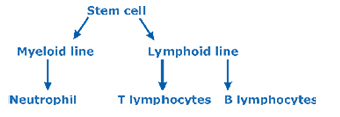
Acute lymphocytic or lymphoblastic leukemia, known as ALL, is the most common childhood leukemia, accounting for 80% of all acute leukemias in children. ALL is most common in children between the ages of 3 and 7. It occurs when too many immature lymphocytic cells (lymphoblasts) are produced and multiply rapidly, crowding out normal blood cells and making the child susceptible to bleeding and infection. These cells can be found in the blood, the bone marrow, the lymph nodes, the spleen, and other organs.
There are two different types of lymphocytes: T cells and B cells. Often the leukemia arises in the immature lymphocytes. Less frequently, however, leukemia cells develop in T or B cells before becoming cancerous. This type of lymphocytic leukemia is referred to as T or B cell leukemia.
Symptoms
Symptoms of Acute Lymphoblastic Leukemia (ALL)
The following are the most common symptoms of acute lymphoblastic leukemia. However, each individual may experience symptoms differently.
Symptoms may include:
• Bleeding
• Bruising
• Fever
• Infections
• Persistent weakness
• Fatigue
• Loss of appetite
• Aches in bones and joints
• Swollen lymph nodes
• Weight loss
• Night sweats
• Swelling in the abdomen
• Trouble breathing
The symptoms of acute lymphoblastic leukemia may resemble other blood disorders or medical problems. Always consult your doctor for a diagnosis.
Causes
Risk Factors for Acute Lymphoblastic Leukemia (ALL)
Anything that increases your risk of getting a disease is called a risk factor. Having a risk factor does not mean that you will get cancer; not having risk factors doesn't mean that you will not get cancer. People who think they may be at risk should discuss this with their doctor.
Most cases of ALL seem to have no apparent cause.
Possible risk factors include:
• Exposure to radiation, chemicals, and drugs
• A sibling with leukemia
• Having a certain genetic disorder, such as Down's syndrome
Abnormalities in chromosomes may also play a role in the development of acute lymphocytic leukemia.
Staging
Acute Lymphoblastic Leukemia (ALL) Staging
• How leukemia staging differs from that of other cancers
Most types of cancer are staged to communicate the size of the tumor and how far the cancer has spread. But leukemia rarely causes tumors. Because it is in your bone marrow and blood, it has already spread throughout your body. With ALL, doctors use different terms to describe the response of the leukemia to treatment.
• Phases of ALL:
• Untreated ALL
Your doctor has just diagnosed you with ALL. Your complete blood count (CBC) is abnormal. You have more than 5% immature white blood cells, called blasts, in your bone marrow. You probably have symptoms of leukemia, such as pain, fever, and bleeding.
• ALL in Remission
You have received treatment for ALL. During this phase, your CBC is normal, you have less than 5% blasts, and you have no signs or symptoms of leukemia anywhere in your body.
• Minimal Residual Disease
Your ALL appears to be in remission, but very sensitive lab tests are still able to detect leukemia cells in the bone marrow. Your ALL may be more likely to relapse, so you may benefit from further treatment to try to kill the remaining cells.
• Refractory ALL
The leukemia has not gone away and is not responding to treatment.
• Relapsed ALL (also called Recurrent ALL)
Your leukemia has returned after a period of remission. Your symptoms may return, your CBC becomes abnormal again, and you have at least 5% blasts. Because you will have already undergone treatment, your doctor may need to consider a new treatment plan to bring you back into remission.
Diagnosis
How Is Acute Lymphocytic Leukemia Diagnosed?
In addition to a complete medical history and physical examination, diagnostic procedures for acute lymphocytic leukemia may include the following:
• Blood tests
• Bone marrow aspiration and biopsy
• Cytogenetic analysis
• Immunophenotyping
• Lumbar puncture (spinal tap)
Additional blood tests and other evaluation procedures may also be performed.
Treatments
Treatment Options for Acute Lymphoblastic Leukemia (ALL)
Specific treatment for acute lymphocytic leukemia will be determined by your doctor based on:
• Your age, overall health, and medical history
• Extent of the disease
• Your tolerance for specific medications, procedures, or therapies
• Expectations for the course of the disease
• Your opinion or preference
You may have just one type of treatment or a combination. Different types of treatment have different goals. Here are some of the types of treatment and their goals for adults who have ALL.
• What treatment may include
Chemotherapy
The use of anticancer drugs to shrink or kill cancerous cells and reduce cancer spreading to other parts of the body.
Radiation therapy
The use of high-energy radiation to kill or shrink cancer cells, tumors, and non-cancerous diseases.
Blood and bone marrow transplant
A specialized therapy to transfer healthy bone marrow cells into a patient after their own unhealthy bone marrow has been eliminated.
Immunotherapy
Immunotherapy is designed to boost the body's immune system in order to fight cancer. Doctors and researchers have found that the immune system might also be able to both determine the difference between healthy cells and cancer cells in the body, and to eliminate the cancer cells. For example, CAR-T therapy.
Targeted therapies
Targeted therapies can target cancerous cells without affecting healthy tissue, unlike radiation and chemotherapy treatments.
Some newer drugs specifically target abnormal proteins, such as those caused by the Philadelphia chromosome. Drugs such as imatinib (Gleevec) and dasatinib (Sprycel) may be helpful in the treatment of ALL that has this chromosome. These drugs are taken daily as pills.
(The content above extract from stanfordhealthcare.org)
-
-
Diseases ·
-


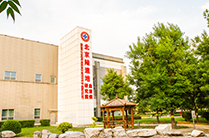
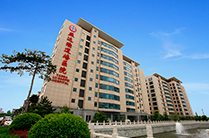



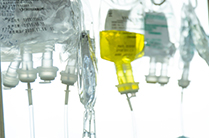

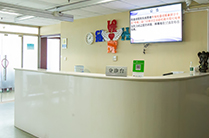




 京公网安备13108202000843号
京公网安备13108202000843号